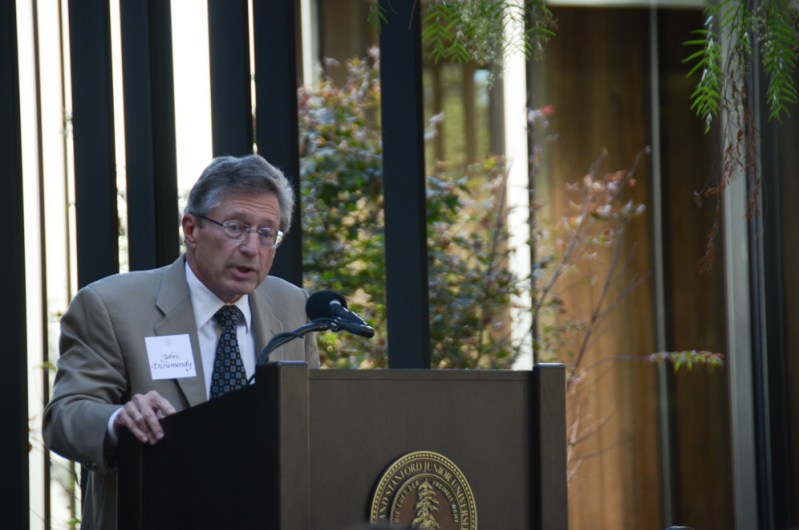“He’s inspirational, but from far away.”
“Isn’t he the leader of the professors?”
“The guy who gives a speech at the beginning of the year and comes out of hiding again to give another one.”
Undergraduates, when asked what a provost is, seemed to have little idea of what the role entails.
So, what is a provost?
Every day, many students wake up in the dorms; the provost ultimately decides when to build or renovate them. Every year, students conduct research with faculty across campus; the provost signs off on each of these faculty hires and his office gives the departments funding to operate. The provost also sets the cost of being a Stanford student through policy on tuition and financial aid.
The provost makes decisions about the long-term health of the University, in concert with the president, and responds to immediate problems within Stanford. The dean of each school and various vice provosts all report to the provost.
“It’s essentially a chief operating officer role, if you [compare] it to a corporate structure,” said vice provost for budget and auxiliaries Timothy Warner.
Often referred to as the “chief academic and chief budgetary officer” of the University, the role of the provost at Stanford is likely the largest of any university, according to serving provost John Etchemendy. The position emerged from necessity after World War II.
“Universities became such large, complex places that it was impossible for one person to run the internal and external parts,” Etchemendy said.
Any department proposal for new faculty or tenure requires approval from the Office of the Provost, which also grants “billets” that limit the number of faculty in the various departments and schools. Furthermore, the provost oversees development and changes in general education requirements for undergraduates.
In addition to handling academics, the provost bears ultimate responsibility for the University’s budget, which nears $6 billion.
“If you have a tenured faculty member who is the chief academic officer, it makes sense that that person would be the chief budget officer, because academic decisions ought to inform budget decisions,” Warner said.
In this regard, Stanford stands in contrast to many other American universities, where the budget and academic functions are handled separately.
All these responsibilities generally boil down to one thing.
“I’m in meetings [every day],” Etchemendy said. “One hour I might be meeting with the chair of cardiothoracic surgery, the next with the director of athletics.”
Beyond planning academic and financial matters, the provost must also react to crises on campus and in the larger world.
“When we were suffering in 2008 from the financial crisis, [the provost, president and board] had to affirm our financial priorities,” said vice provost for undergraduate education Harry Elam. “They said our priority was need-blind admissions, and the provost said we were going to make sure [of that].”
Etchemendy also sees the position as an opportunity to shape and affirm the ideals of the University.
“Ultimately, [a crisis] happens because the people at the top don’t make it clear … all the way down what our values are,” Etchemendy said.
When you enter your dorm room, walk across the well-manicured campus or do homework from a Thinking Matters class, the provost’s decisions have affected your life. With Etchemendy’s departure and Persis Drell’s arrival to the provost position in February, she assumes a position that will influence nearly every part of this university.
“A critical stakeholder [in Stanford] is the undergraduate [student body],” Elam said. “I’m excited to see what [President Marc Tessier-Lavigne and Persis Drell] will invest in as priorities.”
Contact Nic Fort at nfort ‘at’ stanford.edu.
